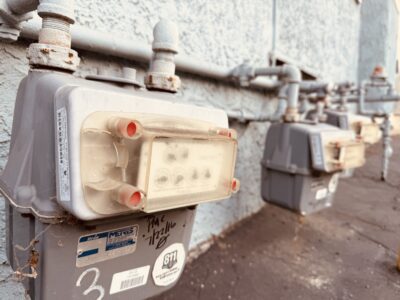Green Groups and Corporate Sustainability
Environmental NGOs sometimes partner with business, sometimes administer “tough love.”
Much of what environmental groups do involves the government: lobbying Congress, participating in rulemakings, and suing when all else fails. But there is also an interesting story to be told of how these groups relate to the corporate world. Sometimes they play the good cop, forming partnership with companies; sometimes the bad cop, trashing the company’s policies in the media.
Environmental Defense Fund has been the leader among environmental organizations in partnering with business. EDF began its private sector work by helping McDonald’s find a replacement for its styrofoam hamburger containers, then helping UPS reduce emissions with improved packaging. It has now worked on projects with a substantial share of Fortune 100 companies, and “has worked on so many projects with Walmart that it located an expert at the Walmart headquarters.”
EDF’s approach is explained on its website:
“If we are going to turn the corner on problems such as climate change, habitat loss and overfishing, we need the leverage of powerful partners. . . Corporate partnerships have been a cornerstone of our approach ever since we launched our first partnership with McDonald’s 25 years ago. Key to our success has been maintaining financial independence from the get-go. ‘Because we accept no funding from our corporate partners, we’re free to set aggressive goals and influence entire industries,’ says Tom Murray, vice president of EDF’s corporate partnerships.”
EDF does not stand alone its efforts to constructively engage with business. The Natural Resources Defense Council, the World Wildlife Fund, the Nature Conservancy, and private foundations have invested in private climate action efforts. Similarly, Apple has agreed with the World Wildlife Fund (WWF) to support WWF’s forest preservation efforts in China. Environmental groups have also worked with industry to promote sustainable forestry practices for tropical timber and sustainable fisheries.
Another role of environmental organizations is to exert pressure via public opinion. Apple was chagrined, when, in 2007, after facing criticism from environmental groups about its environmental practices, then CEO Steve Jobs admitted in an open letter to Apple’s shareholders and customers that Apple’s less than forthcoming stance about its environmental policy actually hurt the company’s reputation. Referring to Greenpeace’s assessment of Apple, Jobs noted that “[i]n one environmental group’s recent scorecard, Dell, HP and Lenovo all scored higher than Apple because of their plans (or “plans for releasing plans” in the case of HP) . . . [i]n reality, Apple is ahead of all of these companies in eliminating toxic chemicals from its products.” But in 2011, Greenpeace placed Apple at the bottom of its green league table of companies in the technology field because of Apple’s reliance on coal power at its data centers. And in 2012, Greenpeace claimed that coal made up 55.1% of Apple’s cloud energy. In its report, Greenpeace targeted Apple’s new data center in Maiden, NC, whose building obtained LEED Platinum certification and opened in 2010. Greenpeace calculated that this data center in North Carolina would utilize 100 megawatts of power while Apple countered that at maximum, the data center would only use 20 megawatts and that renewable resources would make up greater than 60% of the power use there. By 2014, Greenpeace listed Apple, Google, and Facebook as the top three cleanest global data center operators, and in 2015, Greenpeace praised Apple as “lead[ing] the charge” regarding powering its Internet operations with clean energy.
As the Apple experience indicates, Greenpeace uses a kind of tough love, mixing some praise with stern criticism. Its critique of Dell is a good example. In its 2017 “Guide to Greener Electronics,” Greenpeace had some good things to say. It labeled Dell as a leader “in terms of designing their products with repairability in mind. In addition, Greenpeace noted Dell’s free recycling program citing “success in using closed-loop plastic collected from its take-back channel.” Furthermore, Dell is among the few companies, including Apple, to “publish their list of substances that must be restricted in the manufacturing of their devices (“MRSL”).” But Greenpeace also criticized Dell for not honoring its commitment “to phase out PVC and BFRs [a flame retardant] from their products to stem toxic e-waste. Specifically, Greenpeace noted that “in 2017, only Apple and Google products are free of BFR and PVC across their product lines.”
Environmental groups can play a useful role in these interactions when they have the expertise and credibility to provide reliable information about corporate performance. Depending on circumstances, facilitation and public pushback can both be useful tools. Green groups can assist companies that want to move in the right direction, or they can push back against companies that are failing to address environmental problems. Or both, at the same time. In an era when environmental progress often seems to be bottom-up rather than top-down, this may be an increasingly important part of their work.







Reader Comments